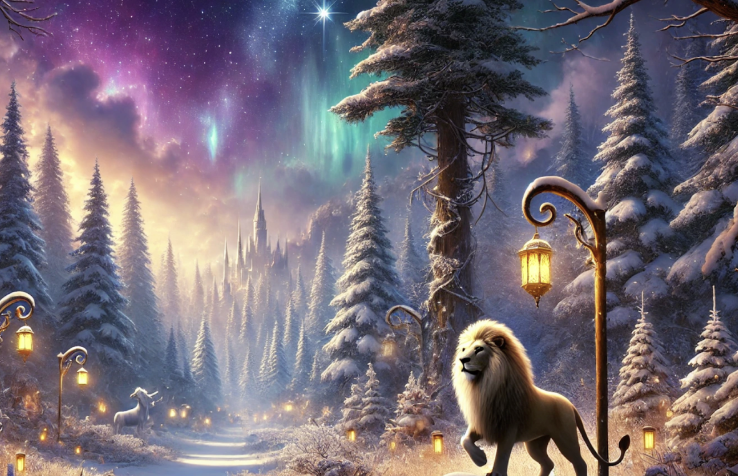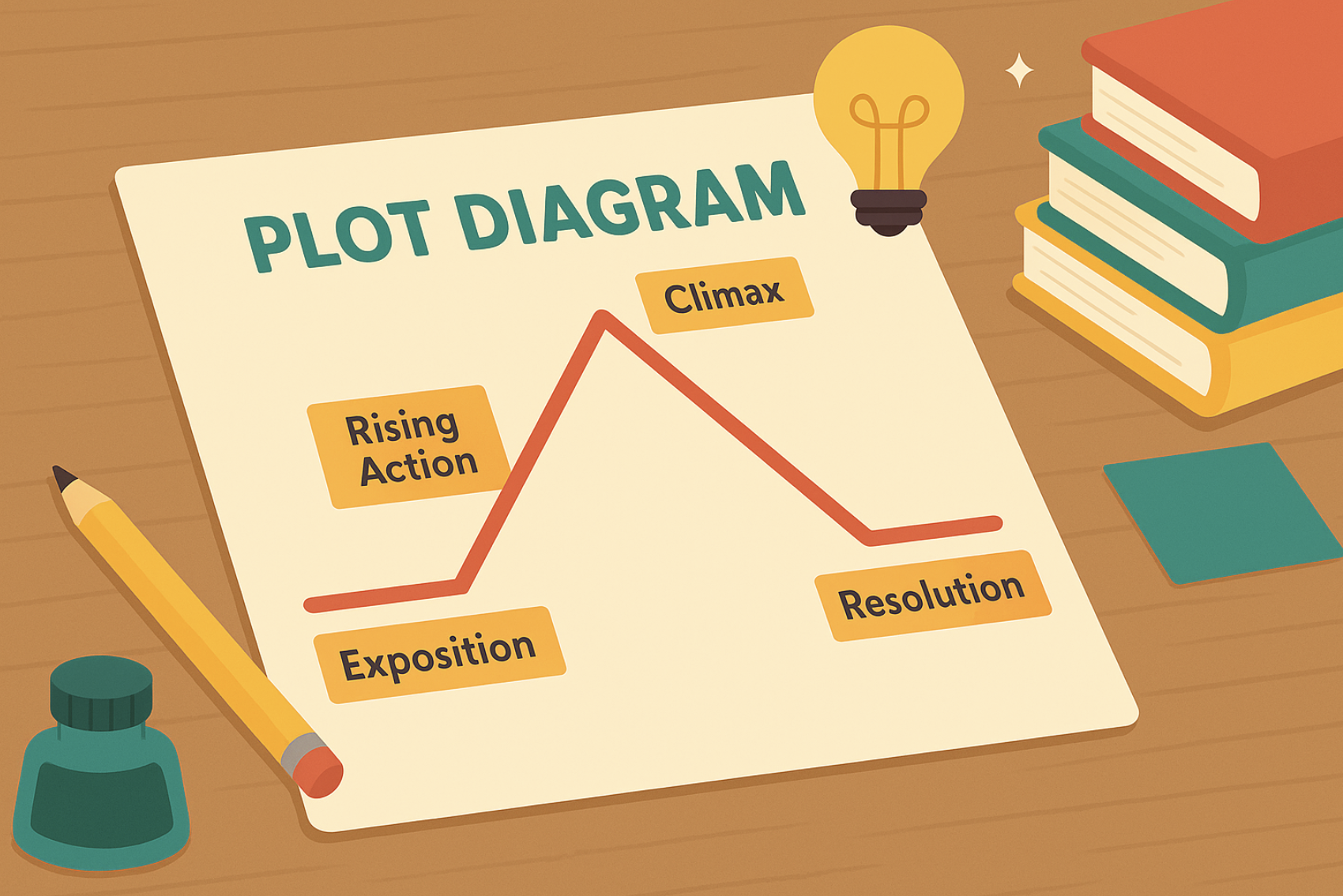What is high fantasy genre? Imagine vast kingdoms with towering castles, enchanted forests filled with mythical creatures, and epic quests that span lifetimes. Magic flows freely, ancient prophecies demand fulfillment, and a dark lord may be lurking in the shadows. Welcome to the world of high fantasy—a genre where the stakes are monumental, the landscapes endless, and the battles between good and evil as legendary as a 1,000-page book (yes, literally).
In this article, we’ll break down everything you need to know about the high fantasy genre, from its rich mythologies to its defining features. We’ll also compare it to its more grounded cousin, low fantasy, and explore some iconic works that have shaped the genre. So, grab your sword, mount your trusty steed (or just get comfy in your chair), and let’s embark on a journey into the realm where magic is real, and anything is possible.
What is High Fantasy Genre? Defining a Genre of Its Own
So, what is high fantasy? It’s not just about swords and dragons (though those certainly help). At its core, high fantasy is a subgenre of fantasy set in entirely fictional worlds—places where magic is as real as the air you breathe, and mythical creatures roam freely across vast landscapes.
What sets high fantasy apart is its world-building. Authors don’t simply add magic to our world; they create entire, immersive universes. Think sprawling kingdoms, ancient prophecies, complex political systems, and magical beings living in enchanted forests or treacherous mountains. In high fantasy, the setting often takes center stage, shaping the plot just as much as the characters.
Heroes in high fantasy typically come from humble beginnings—farm boys or orphans—destined for greatness, often through an ancient prophecy. These heroes undertake massive quests, wield magical weapons, befriend wise mentors, and battle dark forces, relying on their courage and determination. And magic? It’s not just a tool—it’s governed by strict systems, from intricate spell-casting to ancient rituals, and plays a central role in shaping the world’s history and conflict.
What Makes High Fantasy Stand Out? Key Characteristics Explained
High fantasy is more than just magic and mythical creatures—it’s an entire universe unto itself. To truly understand what makes high fantasy stand out, let’s take a closer look at its key characteristics that set it apart from other genres, even within the broader fantasy category.
1. Epic World-Building
The hallmark of high fantasy is its elaborate and immersive world-building. In high fantasy, the world isn’t just a backdrop for the story; it’s a living, breathing character in its own right. Think massive continents, unique cultures, languages, and complex histories. From the towering castles in The Lord of the Rings to the desert landscapes of The Wheel of Time, these worlds feel vast, rich, and fully realized. Readers are often transported to these alternate realms, where every tree, river, and mountain carries significance to the story.
2. Magic and Mythology
Magic is at the very core of high fantasy. Whether it’s powerful wizards, enchanted weapons, or ancient spells passed down through the ages, magic in these stories is never just an afterthought—it’s deeply ingrained in the world’s fabric. Alongside magic, high fantasy often includes complex mythologies—stories about gods, heroes, and legendary creatures—that add layers of depth to the world. This magical realism isn’t just about spectacle; it plays a central role in the plot, often influencing character choices and the direction of the story.
3. The Hero’s Journey (With a Capital ‘H’)
A defining characteristic of high fantasy is the archetypal “hero’s journey“—the classic story structure where an ordinary individual is called to undertake a life-changing adventure. Heroes in high fantasy often start as humble farm boys or unlikely adventurers, but they are destined to face extraordinary challenges. They encounter wise mentors (hello, Gandalf), forge powerful alliances, and battle enemies far greater than themselves. This journey isn’t just about defeating a dark lord; it’s about growth, transformation, and the triumph of good over evil.
4. A Clear Battle of Good vs. Evil
At its heart, high fantasy often revolves around a cosmic struggle between good and evil. It’s not just about small-scale conflicts; it’s a battle for the fate of entire worlds. The heroes typically face off against dark forces, whether it’s a tyrannical sorcerer, a malicious deity, or an army of mythical creatures. The stakes are high, often involving the very survival of the world itself.
5. Mythical Creatures and Races
High fantasy is filled with creatures that are the stuff of legends—dragons, elves, dwarves, orcs, and all sorts of beasts that live outside our reality. These creatures are often more than just background characters; they are integral to the world’s ecosystem, politics, and culture. Elves might be the ancient keepers of wisdom, while dwarves control the mines of precious metals, and dragons? Well, they usually have a way of showing up when you least expect them, bringing with them both menace and allure.
High fantasy vs Low fantasy: What’s the Difference?
High fantasy and low fantasy are two sides of the same magical coin, but they couldn’t be more different in terms of setting, tone, and scope. To help you understand what is high fantasy genre and what makes it unique, let’s break down the key differences between high fantasy and its often more grounded counterpart: low fantasy.
1. Setting: The World-Building Divide
One of the most obvious differences between high and low fantasy is the setting. In high fantasy, the story takes place in an entirely imaginary world, often one with its history, geography, and rules. Think Middle-earth from The Lord of the Rings or the Seven Kingdoms from A Song of Ice and Fire. These are places where magic is real, kingdoms rise and fall, and epic battles shape the course of history.
In contrast, low fantasy is set in the real world, or a world closely resembling ours, with only slight magical elements. The magic is usually subtle—think of a haunted house, a magical item, or a single character with special powers, rather than entire civilizations based on magic and myth. Harry Potter fits more in the low fantasy category, as it’s set in the real world, albeit with a hidden magical society.
2. Magic: A Matter of Scale
Magic plays a central role in both high and low fantasy, but in high fantasy, it’s pervasive and world-changing. It’s not just an occasional tool used by a select few characters—it’s a fundamental part of the world itself. In high fantasy, magic governs everything from politics to battle strategies and even the fate of entire civilizations. Whether it’s Gandalf’s wizardry in The Lord of the Rings or the intricate magic systems in The Stormlight Archive, high fantasy shows magic shaping every facet of life.
On the other hand, low fantasy usually features a more subdued and rare form of magic. Characters might possess magical abilities, but magic is often hidden from most people, or it’s used sparingly. It’s less about large-scale spells and more about personal power or subtle supernatural elements.
3. Stakes: The Difference in Scope
High fantasy often involves grand, world-altering stakes. We’re talking about the survival of entire realms, the fate of kings and kingdoms, or even the entire universe. Heroes face the ultimate battle between good and evil, with the weight of history resting on their shoulders. The scope of the conflict is monumental, and the consequences are far-reaching.
Low fantasy, however, is more grounded in the human experience, focusing on more personal conflicts. The stakes tend to be smaller and more intimate, such as saving a single person, uncovering a local mystery, or preventing a crime. It’s less about world-changing events and more about individual struggles and relationships.
4. Characters: Ordinary vs. Extraordinary
In high fantasy, characters are often larger-than-life, fulfilling epic roles in grand stories. The heroes are usually chosen ones—the last hope against an ancient evil or the key to unlocking an ancient prophecy. They’re often endowed with great power or purpose, and their journeys reflect the magnitude of their mission.
Low fantasy characters, on the other hand, tend to be more ordinary, with their lives often reflecting our own. They might have personal problems, moral dilemmas, or daily struggles that are much more relatable. These characters usually don’t hold the fate of the world in their hands, but instead face challenges that feel more “real” and personal.
5. Tone: Escapism vs. Realism
High fantasy is all about escapism—escaping to a world full of magic, heroic deeds, and mythical beings. It’s a place where you can forget about the troubles of the real world and immerse yourself in an epic adventure. The tone is often serious, with a focus on deep themes like destiny, sacrifice, and morality.
Low fantasy, however, tends to be grittier and more grounded in the human condition. It explores the real world with a touch of magic or mystery, and often has a more realistic tone. Even though magical elements exist, they are usually dealt with in a more practical, less fantastical way. It’s more about confronting the challenges of the “real” world, albeit with a supernatural twist.
Examples of High Fantasy: Iconic Works That Define the Genre
To truly understand what high fantasy looks like in action and what is considered high fantasy, it’s helpful to dive into some iconic examples that have defined the genre over the years. These works are the cornerstones of high fantasy, showcasing the grand world-building, magical elements, and epic quests that make the genre so captivating.
1. The Lord of the Rings by J.R.R. Tolkien
No discussion of high fantasy would be complete without mentioning J.R.R. Tolkien’s masterpiece, The Lord of the Rings. Often considered the foundation of the modern high fantasy genre, Tolkien created an entire world—Middle-earth—complete with its languages, cultures, and rich history. The epic journey of Frodo Baggins and his companions to destroy the One Ring is a quintessential example of the hero’s journey and the battle between good and evil. The books (and their film adaptations) have influenced nearly every high fantasy work that followed, making Tolkien the undisputed grandfather of the genre.
2. A Song of Ice and Fire by George R.R. Martin
While A Song of Ice and Fire (the series that inspired Game of Thrones) might not follow the traditional “good vs. evil” mold of high fantasy, it’s still deeply rooted in the genre’s core elements. Martin’s sprawling world, Westeros, is filled with intricate political plots, magic, and a cast of morally complex characters. Unlike Tolkien’s clear-cut good vs. evil, Martin’s series thrives on gray morality, where heroes and villains are often indistinguishable. The inclusion of dragons and magical elements adds that fantastical touch that’s essential to high fantasy.
3. The Wheel of Time by Robert Jordan
Another titan in the high fantasy world is Robert Jordan’s The Wheel of Time series. Spanning 14 books (plus prequels), the series is known for its complex world-building and intricate magic systems. Set in a world where time is cyclical and the Dragon Reborn is destined to fight the Dark One, the series combines prophecy, magic, and political intrigue. Its vast scope and the richly developed cultures and societies make it a standout in the high fantasy genre. Fans of epic journeys and deep, immersive worlds will feel right at home here.
4. The Stormlight Archive by Brandon Sanderson
For a more modern take on high fantasy, Brandon Sanderson’s The Stormlight Archive is quickly becoming one of the genre’s most beloved series. Set on the storm-ravaged planet of Roshar, the books are known for their intricate magic systems, complex characters, and the vastness of the world-building. Sanderson’s focus on moral questions, the consequences of power, and the exploration of human nature make it a compelling read for both fans of classic high fantasy and those looking for something fresh and innovative.
5. The Chronicles of Narnia by C.S. Lewis
Though written for a younger audience, C.S. Lewis’s The Chronicles of Narnia holds a special place in the high fantasy pantheon. The series, which takes place in the magical world of Narnia, features talking animals, mythical creatures, and a clear battle between good (the lion Aslan) and evil (the White Witch). The allegorical nature of the stories adds depth, making it not just a children’s fantasy series but a rich, timeless work of high fantasy that appeals to all ages.
6. The Earthsea Cycle by Ursula K. Le Guin
For something a little different, Ursula K. Le Guin’s The Earthsea Cycle blends high fantasy with philosophical exploration. The series is set in an archipelago of islands where magic is governed by the balance of the world. Le Guin’s writing stands out for its subtlety, character-driven plots, and examination of power and morality. The protagonist, Ged, is a wizard who must learn the consequences of his actions, making the series both an adventure and a profound meditation on life’s deeper questions.
These examples are just a handful of the high fantasy works that have shaped the genre. Each brings something unique to the table—whether it’s intricate world-building, complex characters, or explorations of morality and power. If you’re new to high fantasy, these books are the perfect place to start your journey.
Your Publishing Journey Awaits – Start NowWhat is the Difference Between Fantasy and High Fantasy?
Fantasy is a broad genre with many subgenres, but high fantasy stands out due to its grand scale and magical depth. So, what is considered high fantasy? Let’s break down where the line is drawn:
- Fantasy: A genre where magic, mythical creatures, and supernatural elements are key, but it can be set in either real or imagined worlds. The stakes might be personal or local.
- High Fantasy: A subgenre of fantasy set in entirely imaginary worlds, where magic is central to the plot and the stakes are world-changing. Think epic battles between good and evil.
Key Differences:
- World-building: High fantasy features complex, fully imagined worlds (like Middle-earth), while regular fantasy might blend magic into a version of our world (like Harry Potter).
- Magic: In high fantasy, magic is a fundamental part of the world’s structure; in regular fantasy, it might be more subtle or confined to certain characters or locations.
- Scope of Stakes: High fantasy typically involves the fate of entire civilizations or worlds, while fantasy can focus on smaller, personal conflicts.
The Blurry Line:
- Some stories, like The Chronicles of Narnia or Game of Thrones, mix elements of high fantasy with more intimate or politically driven plots, making the boundary between subgenres a bit fuzzy.
The Enduring Appeal of High Fantasy
High fantasy has stood the test of time, and for good reason. Here’s why it continues to captivate audiences:
- Escapism: It offers a perfect escape into vast, magical worlds where anything is possible.
- Timeless Themes: The classic battle between good and evil, destiny, and sacrifice resonates with readers across generations.
- Immersive Worlds: The deep, intricate world-building lets readers fully dive into magical realms and cultures.
- Adaptability: High fantasy thrives in books, movies, and games, with successful franchises like The Lord of the Rings and Game of Thrones.
- Endless Discovery: There’s always something new to explore—whether it’s fresh magic systems or new realms to discover.
Ultimately, high fantasy remains beloved because it offers an adventure that’s both timeless and ever-expanding.
Conclusion: Embrace the Magic of High Fantasy
High fantasy offers an unparalleled form of escapism, transporting readers to vast, magical worlds where anything is possible. From epic battles between good and evil to intricate magic systems and mythical creatures, high fantasy ignites our imaginations and invites us to explore realms beyond our own.
But high fantasy isn’t just about escaping reality—it’s about exploring timeless themes like destiny, sacrifice, and heroism. These themes resonate with readers of all ages, making high fantasy stories not only captivating but meaningful. Whether it’s a hero’s journey, a grand prophecy, or a world on the brink of destruction, these stories have an enduring appeal that continues to capture the hearts of millions.
As the genre continues to evolve, high fantasy remains one of the most exciting and immersive forms of storytelling. With its complex world-building, unforgettable characters, and magical adventures, it offers something for every reader. So, whether you’re revisiting your favorite series or discovering a new one, the world of high fantasy will always have a place for you.
If you haven’t yet ventured into high fantasy, now is the perfect time to pick up that first book. The realms of magic and mystery are waiting!
FAQs – What is High Fantasy?
Q1: What is high fantasy vs low fantasy
High fantasy is a subgenre of fantasy that is set in an entirely fictional world with its own rules, history, and magic. The stakes are typically world-altering, often involving a battle between good and evil. Examples include The Lord of the Rings and A Song of Ice and Fire.
Low fantasy, on the other hand, is set in the real world or a version of it, with magical elements that are subtle, hidden, or rare. The stakes are usually smaller and more personal. Harry Potter and The Chronicles of Narnia are examples of low fantasy.
Q2: What is soft fantasy?
Soft fantasy is a subgenre where magic is subtle, undefined, and less central to the plot. Unlike high fantasy, which has strict magical systems, soft fantasy focuses more on characters and relationships, with magic often being mysterious or understated. Examples include The Night Circus and Stardust, where magical elements are woven into the story in a gentle, almost dreamlike way.
Q3: What qualifies as high fantasy?
High fantasy is defined by the following elements:
- A completely fictional world with its own rules, history, and geography.
- Magic is often central to the plot and world-building.
- Epic stakes, such as the battle between good and evil, with consequences that affect entire realms or civilizations.
- Heroic characters, often with a special destiny, embarking on quests to save the world.
- Complex, immersive world-building with rich cultures, mythologies, and creatures like dragons, elves, orcs, and more.
Examples include The Lord of the Rings, A Song of Ice and Fire, and The Wheel of Time.
Q4: Is Game of Thrones high or low fantasy?
Game of Thrones, or A Song of Ice and Fire, is generally considered high fantasy, although it blurs the lines. It features a fictional world (Westeros), intricate political plots, magical elements (dragons, wights, etc.), and world-altering stakes. However, it differs from traditional high fantasy because it lacks a clear-cut battle between good and evil, focusing more on complex moral choices and political intrigue.
Q5: Is Dune high or low fantasy?
Dune is not considered traditional fantasy; it is more accurately classified as science fiction. However, it shares some elements with high fantasy, such as complex world-building, a messianic figure, and an epic struggle for control of the universe. Dune features a desert planet with political intrigue, mysticism, and a conflict that could alter the course of history, similar to high fantasy themes, but it’s set in a futuristic world rather than a magical one.
Q6: Is Narnia high or low fantasy?
C.S. Lewis’s The Chronicles of Narnia is generally considered high fantasy because it is set in a completely fictional world—Narnia—and features magic, mythical creatures (like Aslan, fauns, and centaurs), and epic battles between good and evil. While it has an allegorical nature and is often aimed at children, it contains all the classic hallmarks of high fantasy, with vast world-building and world-altering stakes.
Q7: What kind of fantasy is Skyrim?
Skyrim is a high fantasy role-playing game. Set in the fictional world of Tamriel, it features a rich, detailed environment filled with magic, mythical creatures, ancient prophecies, and a conflict that could alter the fate of the entire world. It’s deeply rooted in high fantasy themes, with dragons, wizards, and epic quests, fitting the genre’s typical world-building and stakes.
Q8: Is The Witcher high or low fantasy?The Witcher series is generally considered high fantasy because it takes place in a fictional world filled with magic, mythical creatures, and moral complexity. While The Witcher is darker and more grounded than traditional high fantasy, with a focus on complex characters and ethical dilemmas, it still fits the high fantasy mold due to its extensive world-building, magic systems, and a world-altering struggle between good and evil.








